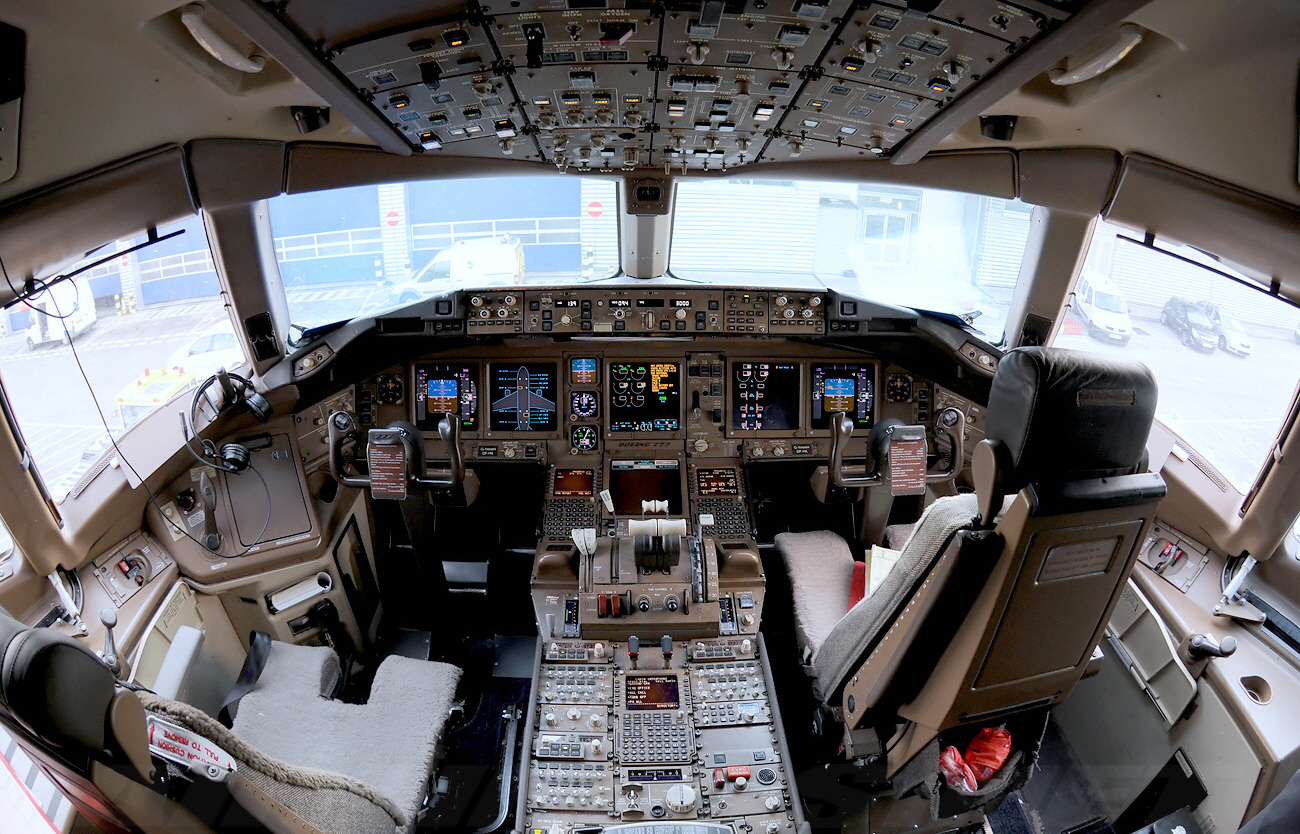 The Boeing 777 is a long-range wide-body twin-engine jet airliner manufactured by Boeing Commercial Airplanes. It is the world's largest twinjet and has a capacity of over 300 passengers, with a range of 5,235 to 9,380 nautical miles, depending on model. Commonly referred to as the "Triple Seven", its distinguishing features include the largest-diameter turbofan engines of any aircraft, six wheels on each main landing gear, a circular fuselage cross-section and a blade shaped tail cone. Developed in consultation with eight major airlines, the 777 was designed to replace older wide-body airliners and bridge the capacity difference between the 767 and 747. As Boeing's first fly-by-wire airliner, it has computer-mediated controls; it is also the first entirely computer-designed commercial aircraft.
The Boeing 777 is a long-range wide-body twin-engine jet airliner manufactured by Boeing Commercial Airplanes. It is the world's largest twinjet and has a capacity of over 300 passengers, with a range of 5,235 to 9,380 nautical miles, depending on model. Commonly referred to as the "Triple Seven", its distinguishing features include the largest-diameter turbofan engines of any aircraft, six wheels on each main landing gear, a circular fuselage cross-section and a blade shaped tail cone. Developed in consultation with eight major airlines, the 777 was designed to replace older wide-body airliners and bridge the capacity difference between the 767 and 747. As Boeing's first fly-by-wire airliner, it has computer-mediated controls; it is also the first entirely computer-designed commercial aircraft.
The 777 ranks as one of Boeing's best-selling models, selling over 1,000 aircraft to date. Because of rising fuel costs, airlines have acquired the type as a comparatively fuel-efficient alternative to other wide-body jets and have increasingly deployed the aircraft on long-haul transoceanic routes. Direct market competitors have included the Airbus A330-300, A340, McDonnell Douglas MD-11 and the A350. The new Boeing 787 Dreamliner, which entered service in 2011 with All Nippon Airways, shares design features with the 777.
Boeing introduced a number of advanced technologies with the 777 design, including fully digital fly-by-wire controls, fully software-configurable avionics, glass cockpit flight displays, and the first use of a fibre optic avionics network on a commercial airliner. In designing the 777 as its first fly-by-wire commercial aircraft, Boeing decided to retain conventional control yokes rather than change to sidestick controllers as used in many fly-by-wire fighter aircraft and in many Airbus airliners. Along with traditional yoke and rudder controls, the cockpit features a simplified layout that retains similarities to previous Boeing models. The fly-by-wire system also incorporates flight envelope protection, a system that guides pilot inputs within a computer-calculated framework of operating parameters, acting to prevent stalling and overly stressful manoeuvres. This system can be overridden by the pilot in command if deemed necessary, unlike the similar system on Airbus designs.
This was the first aircraft that Tim Orchard flew commercially as a British Airways Captain.

